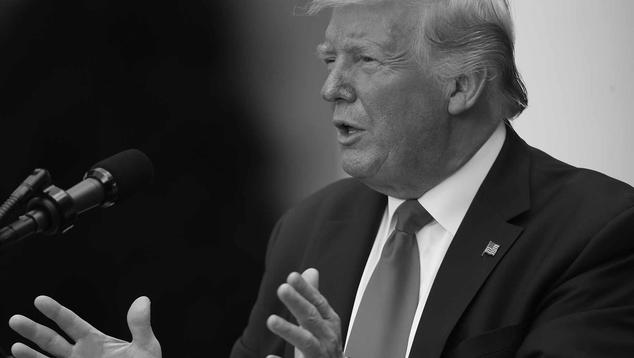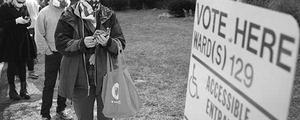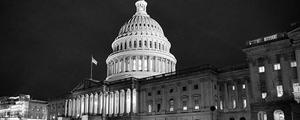Story Highlights
- 50% or higher approval makes president safe bet for reelection
- The two presidents with approval ratings below 40% lost
- Approval ratings have not changed much between June and Election Day
WASHINGTON, D.C. -- President Donald Trump's prospects of winning a second term in office will be closely tied to the level of his job approval rating. Historically, all incumbents with an approval rating of 50% or higher have won reelection, and presidents with approval ratings much lower than 50% have lost.
| Year | June of reelection year | Final measure before election | Won reelection | ||||||||||||||||||||||||||||||||||||||||||||||||||||||||||||||||||||||||||||||||||||||||||||||||
|---|---|---|---|---|---|---|---|---|---|---|---|---|---|---|---|---|---|---|---|---|---|---|---|---|---|---|---|---|---|---|---|---|---|---|---|---|---|---|---|---|---|---|---|---|---|---|---|---|---|---|---|---|---|---|---|---|---|---|---|---|---|---|---|---|---|---|---|---|---|---|---|---|---|---|---|---|---|---|---|---|---|---|---|---|---|---|---|---|---|---|---|---|---|---|---|---|---|---|---|
| % Approve | % Approve | ||||||||||||||||||||||||||||||||||||||||||||||||||||||||||||||||||||||||||||||||||||||||||||||||||
| Obama | 2012 | 46 | 52 | Yes | |||||||||||||||||||||||||||||||||||||||||||||||||||||||||||||||||||||||||||||||||||||||||||||||
| G.W. Bush | 2004 | 49 | 48 | Yes | |||||||||||||||||||||||||||||||||||||||||||||||||||||||||||||||||||||||||||||||||||||||||||||||
| Clinton | 1996 | 55 | 54 | Yes | |||||||||||||||||||||||||||||||||||||||||||||||||||||||||||||||||||||||||||||||||||||||||||||||
| G.H.W. Bush | 1992 | 37 | 34 | No | |||||||||||||||||||||||||||||||||||||||||||||||||||||||||||||||||||||||||||||||||||||||||||||||
| Reagan | 1984 | 54 | 58 | Yes | |||||||||||||||||||||||||||||||||||||||||||||||||||||||||||||||||||||||||||||||||||||||||||||||
| Carter | 1980 | 32 | 37 | No | |||||||||||||||||||||||||||||||||||||||||||||||||||||||||||||||||||||||||||||||||||||||||||||||
| Ford | 1976 | 45 | n/a | No | |||||||||||||||||||||||||||||||||||||||||||||||||||||||||||||||||||||||||||||||||||||||||||||||
| Nixon | 1972 | 59 | n/a | Yes | |||||||||||||||||||||||||||||||||||||||||||||||||||||||||||||||||||||||||||||||||||||||||||||||
| Johnson | 1964 | 74 | n/a | Yes | |||||||||||||||||||||||||||||||||||||||||||||||||||||||||||||||||||||||||||||||||||||||||||||||
| Eisenhower | 1956 | 72 | 68 | Yes | |||||||||||||||||||||||||||||||||||||||||||||||||||||||||||||||||||||||||||||||||||||||||||||||
| Truman | 1948 | 40 | n/a | Yes | |||||||||||||||||||||||||||||||||||||||||||||||||||||||||||||||||||||||||||||||||||||||||||||||
| Note: Gallup did not take presidential approval ratings for Truman, Johnson, Nixon and Ford after June. The final ratings for other presidents are in late October or early November, except for Eisenhower (August) and Carter (September). June data are based on an average of polls conducted during the month. | |||||||||||||||||||||||||||||||||||||||||||||||||||||||||||||||||||||||||||||||||||||||||||||||||||
| Gallup | |||||||||||||||||||||||||||||||||||||||||||||||||||||||||||||||||||||||||||||||||||||||||||||||||||
George W. Bush is the only recent president who had an approval rating above 40% but lower than 50% at the time of the election -- the same range where Trump is now. Bush won a second term in 2004 when his approval rating was 48% in the final Gallup poll taken before the election. However, he did register multiple approval ratings of 50% or higher in the weeks leading up to the election, a level Trump has yet to reach in his presidency.
Historically, Gallup did not often measure presidential approval in the summer or fall of election years. There are no measures for Harry Truman, Lyndon Johnson, Richard Nixon and Gerald Ford past June of their reelection years.
It is safe to assume that Johnson and Nixon maintained approval ratings above 50% through the fall of their reelection years, given their high approval ratings in June of their reelection years and their lopsided margins of victory in the 1964 and 1972 elections, respectively.
However, it is unclear what public support for Harry Truman in 1948 and Gerald Ford in 1976 was just before Election Day. Both incumbents had approval ratings in the 40s in Gallup's June measurements. Truman, who trailed in pre-election polls versus his opponent Thomas Dewey throughout the campaign, won a surprise victory. Ford lost a close election to Jimmy Carter.
Summer-to-Fall Approval Ratings Show Modest, if Any, Improvement
For the six post-World War II presidents whose approval ratings were measured after June of their election years, three saw their approval rating increase modestly as the election drew near, while the others did not.
The three presidents whose job approval ratings improved between June and election day were Barack Obama (up six percentage points), Carter (up five points) and Ronald Reagan (up four points). In the cases of Carter and Reagan, the higher approval ratings did not alter their electoral fate, as Carter's remained well below 50%, and Reagan's stayed comfortably above that level.
The improvement in Obama's approval rating was much more consequential, moving from 46% in June 2012, a level at which his reelection was in jeopardy, to 52% in early November where it was all but assured. The improvement in Obama's job approval rating mostly occurred in September and October, after his party's convention.
George W. Bush's job approval rating was essentially the same at the time of the election as in June, right around the 50% mark. George H.W. Bush (whose job approval rating was well below 50% for most of 1992) and Dwight Eisenhower (with ratings well above 50% in 1956) had slightly lower ratings later in the election year, but again, the changes were not significant enough to change their electoral prospects in a meaningful way.
Implications
Trump, like his two immediate predecessors, has approval ratings in the mid-to-upper 40% range, which indicates his reelection is uncertain. Thus, even a modest increase or decrease in his approval ratings significantly alter his odds of winning a second term.
Particularly if Trump's approval rating is right around 50%, his fate may lie in voter turnout. Like George W. Bush, Trump could benefit if his supporters vote at higher rates than his opponents. Indeed, in Gallup's final 2004 pre-election poll, Bush's job approval rating was 51% among likely voters, compared with the 48% reading among all national adults. At this point, voting turnout is highly uncertain. Attention to the election -- a good predictor of turnout levels -- has receded during the coronavirus pandemic. The pandemic might also create an unprecedented voting environment; many states are contemplating expanding vote-by-mail opportunities so voters are not vulnerable to catching the virus while casting their ballot.
And, like in Trump's own 2016 victory when he won the presidency despite losing the popular vote, he would benefit if he maintains adequate support in the right mix of swing states. To that end, his job approval rating in key states like Wisconsin, Pennsylvania and Michigan may give additional insight into whether he can win a second term.
Explore President Trump's approval ratings and compare them with those of past presidents in the Gallup Presidential Job Approval Center.




